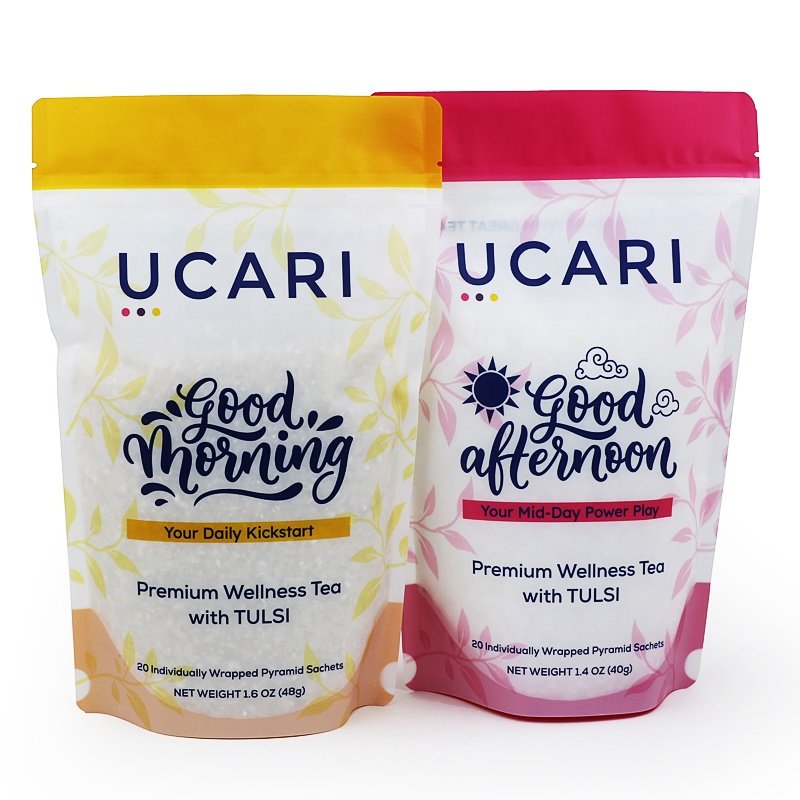Packaging keeps the world organized and informative. It can be a jar of orange jelly or a pouch of dry foods. Whatever the things are stored in, the goal is to provide healthy food to consumers. And in the retail packaging and labeling design industry era, you must hear about flexible and rigid packs.
But which one is best? In this article, we compare two packagings that help you decide which one fulfills your business sales funnel. Let’s get started!
Flexible Packaging VS Rigid Packaging: Overview
Flexible and Rigid are two of the most popular product packaging in the eCommerce marketplace. Also, these packagings are used in several industries, but they have many differences, including
- Custom branding options, such as color, size, etc.
- Consumer preferences and trends,
- Costings of shipping, manufacturing, and maintenance,
- Environmental facts of packs materials, and so on.
For more information, check out the next section!

What is Flexible Packaging?
Flexible packaging is a type of product packaging that is made with non-rigid, flexible packaging materials, like paper, plastic, and aluminum foil. It is a lightweight, durable, heat-resistant, and robust pouch or bag.
In the marketplace, there are different types of flexible packaging you get. Flexible packaging includes,
- Stand up pouches are Ideal containers for a variety of solid, liquid, powdered, and non-powdered foods.
- Rollstock Film is used for several food goods, like sports nutrition, dry food, frozen food packaging, soup, sauces, health, beauty, and others.
- Flat-bottom bags are used for pet food packaging and food products like chocolate, coffee, tea, and confectionery.
- Gusseted pouch is used in different packaging industries, like IQF (Individual Quick Freezing), candy, and snack items.
- Retort pouch is used for pre-cook or ready-to-eat food items and many others.
- 3 side seal bags, lay flat pouches, and many other types are available.
As per its name, flexible packs can be modified or customized to fulfill consumers’ demands. Flexible packaging offers versatile features, from flexible food packaging to medical and skincare products.

What are the Advantages of Flexible Packaging?
Let’s take a look at the pros of flexible packaging below:
Packaging Flexible Materials
Flexible packaging requires flexible paper films and plastics. The paper films are kraft paper, and the plastics are High-Density Polyethylene, polypropylene, or LLDPE with a robust and rigid backbone.
Reduce Food Waste by Increasing Shelf-Life
Laminated films and other materials offer multi-layer protection that increases product freshness and shelf life. Puncture-proof, tear-resistance, harmful UV rays-proof, and use no preservatives to maintain the actual taste.
Here is the video of enviromental impack of inverted Pouches VS. Rigid Plastic Bottles
Reusable and Recyclable Pouch
It’s easy to open, reseal, ship, and offer more space to store. Also, you don’t need to worry about food quality when you restore after using. And that’s the reason for the growth of the flexible packaging market.
Sustainable Pouch Packaging
Lightweight, durable, high-strength and recyclable plastic pouches offer you multiple sustainability-focused packaging. High seal strength, metalized or aluminum foil barrier, and printable packaging structure makes these bags more powerful.
Versatile Packaging
The packaging is ideal for the Consumer Packaged Goods (CPG) market. From industrial applications to several food industries, fertilizer packaging bags, cannabis packaging pouches, and other manufacturers all get benefits from these bags. Also, protective packaging demands less energy and less material to produce.

What are the Disadvantages of Flexible Packaging?
No packaging type is perfect, and the same counts for flexible ones. Below we mentioned some throwbacks that some companies might need to consider.
Lack of Over Pressurization
Suppose you have a business or product that must contain under pressure, like soda cans or aerosol products. Flexible packaging won’t maintain that pressurization.
Impact Protection
Some items require more impact protection if you have a business in electronic devices or wiring. A rigid is more suitable than a flexible for a delicate pre-assembled electronic device.

What is Rigid Packaging?
Rigid packing is just the opposite of flexible packs. It is unable to bend and offers few customization options. The rigid materials are cardboard, glass, tin cans, metal, or hard plastic. All of them are denser and thicker materials. The common products that use rigid bags are food, beverages, cosmetics, medicines, premium or high-cost products, and more.
Types of rigid packaging are:
- Rigid plastic packs are used for blister packaging, plastic bottles, containers, clamshells, and thermoformed.
- Rigid boxes are helpful for shipping luxury packaging, like jewelry, expensive cosmetics, gift plastic boxes, etc.
- Corrugated boxes protect other types of packaged foods, including those in glass bottles.
- Glass and metal packaging are used for food, beverages, and other liquid product packaging.
Rigid hard plastic packages or glass bottles are heavier and stronger, but it has a higher carbon footprint. However, the packaging is known for its strength. Also, it offers structure and support for products.

What are the Advantages of Rigid Packaging?
So, what are the core advantages of rigid food packaging or products instead of using flexible ones? Let’s check the pros of the global rigid packaging market below:
Rigid Packaging Materials
The packaging of rigid materials is stiff in nature. That means it is made with hard plastic, heavy glass, metal, cardboard box, etc, to provide protection and strength.
Luxury Impression Packaging
From jewelry to the high-end beverage industry, perfumes, watches, and other expensive beauty products require a higher perceived value. In these cases, the rigid packaging offers a luxury impression with protection.
Mass Availability
There’s no shortage of rigid containers providers in the packaging marketplace. That means the containers are available when you’re shopping for solutions.
Impact Protection
As mentioned earlier, these rigid containers can provide superior impact protection. You need to provide extra security to your precious products by using foam peanuts or air pillows.

What are the Disadvantages of Rigid Packaging?
With the pros of rigid plastic packaging or other materials out of the way, let’s see if it has some cons.
Fragile Nature
Rigid packs, like a glass bottle, tin cans, or laundry detergent bottles, can break and ruin the contents during shipping or transportation. On the contrary, aluminum cans are vulnerable to tear, burst, and crinkle.
Limited Shelf Space
One of the worst parts of this packaging is you get limited space to display your products. The main reason is its exact dimensions and heavy weight.
Material and Product Waste
For its exact dimensions, it requires more packaging material than necessary. That means the square-centimeter packaging rarely uses its interior volume.
Limited Resealability
Most cardboard packs like cereal boxes, snacks, and other food items or airtight products can’t reseal. The fact is it reduces your product’s preservation once opened.
Flexible Packaging VS. Rigid Packaging: The Major Differences
Flexible vs rigid: why do you choose one over the other? The most asked questions in the packaging food industry. However, both packs have a wide range of uses and popularity in the global marketplace.
Below we discussed some business consideration points and key differences before deciding which suits your business. Let’s get started!
1. Business Branding and Packaging Customization
Packaging printing quality, in-depth product info, brand logo, and color combination represent your business’s uniqueness. As you know, both have fame for their eye-catchy and luxurious outlook. But to explore customized options with multiple printing methods, flexible packages are the best choice.
On the contrary, a rigid one is difficult and demands higher shipping costs to customize.
2. Dimensional Weight and Size of packages
Regarding packing weight and size, rigid containers are heavier than flexible bags. The reason lies in the materials, as we mentioned earlier. Also, the size depends on the packaging requirements.
A rigid container takes up more space because it can’t be bent or squeezed when bundled. But the flexible one is flat and can bend or easily bundle together to save space.

3. Aspects of Strength and Durability
Both offer strong protection to your products when shipped and transported. But flexible packs could not be damaged by a sharp object or less affected by cosmetic abrasion.
On the contrary, the rigid containers have issues being damaged.
4. The True Environmental Impact of Packaging
The environmental impact depends on the packs’ materials. For example, glass can’t be recycled. But Low-Density Polyethylene (LDPE) or other mono flexible materials are fully recycled.

Flexible Packaging or Rigid Packaging: Which One for Business?
E-commerce marketplace trends and consumer demands have changed rapidly over the last decades. Product packaging can boost your business or brand credibility across the marketplace. For online purchasing, your packaging is the first thing that turns customers into potential retailers.
So, why delay? Let’s go forth to reveal the essential product packaging factors!
Consumer Preferences
The Global Flexible Packaging Market is gained appx. USD 248.9 billion in 2022. Also, it is projected to reach USD 315.5 billion by 2027. The main reasons are consumers’ demands and preferences.
Customers rely on packaging with less carbon footprint and offer more features by maintaining food quality.
Cost-effectiveness
Both packagings have their own cons. Apart from those issues, flexible ones require lower manufacturing, shipping, and warehousing costs than rigid ones.
Also, because of its compact nature, you don’t need to count extra in the supply value chain.
Here is the video of the benefits of flexible packaging
Brand Authenticity and Uniqueness
Both packagings offer your products or brands creative outlooks that help to earn authenticity and loyalty.
Also, you don’t need to worry about those packs’ extra strength and durability. But for heavy-duty product shipment, it is ideal to go with rigid ones.
Versatile Features in One Package
With rigid, you may not get versatile features such as flexible ones, like zippers. If you are a small business owner or entrepreneur, you may notice the extra benefits of its flexible shape and size options.
But as mentioned earlier, rigid offers fixed dimensions that may cost higher apart from your needs.
Products’ Safety
Flexible pouch packaging or rigid packages offer high-protection shells to maintain your product quality. But the rigid packs require extra management to confirm secure shipment than flexible ones; because of their minimal protection feature.

Conclusion
Your business goal is to achieve satisfied customers by fulfilling their demands. But first things first, your might aim to build a brand that has eCommerce as its core distribution channel. Then it would be best to consider how much you’re spending on the packaging and what you get in return.
After completing: Flexible packaging vs rigid packaging, we hope you get a clear indication and your business suitable packaging solution. For more tips, keep an eye on the blog page.


